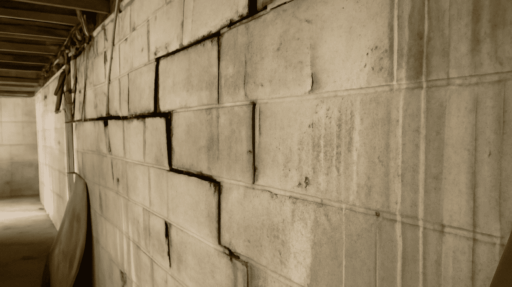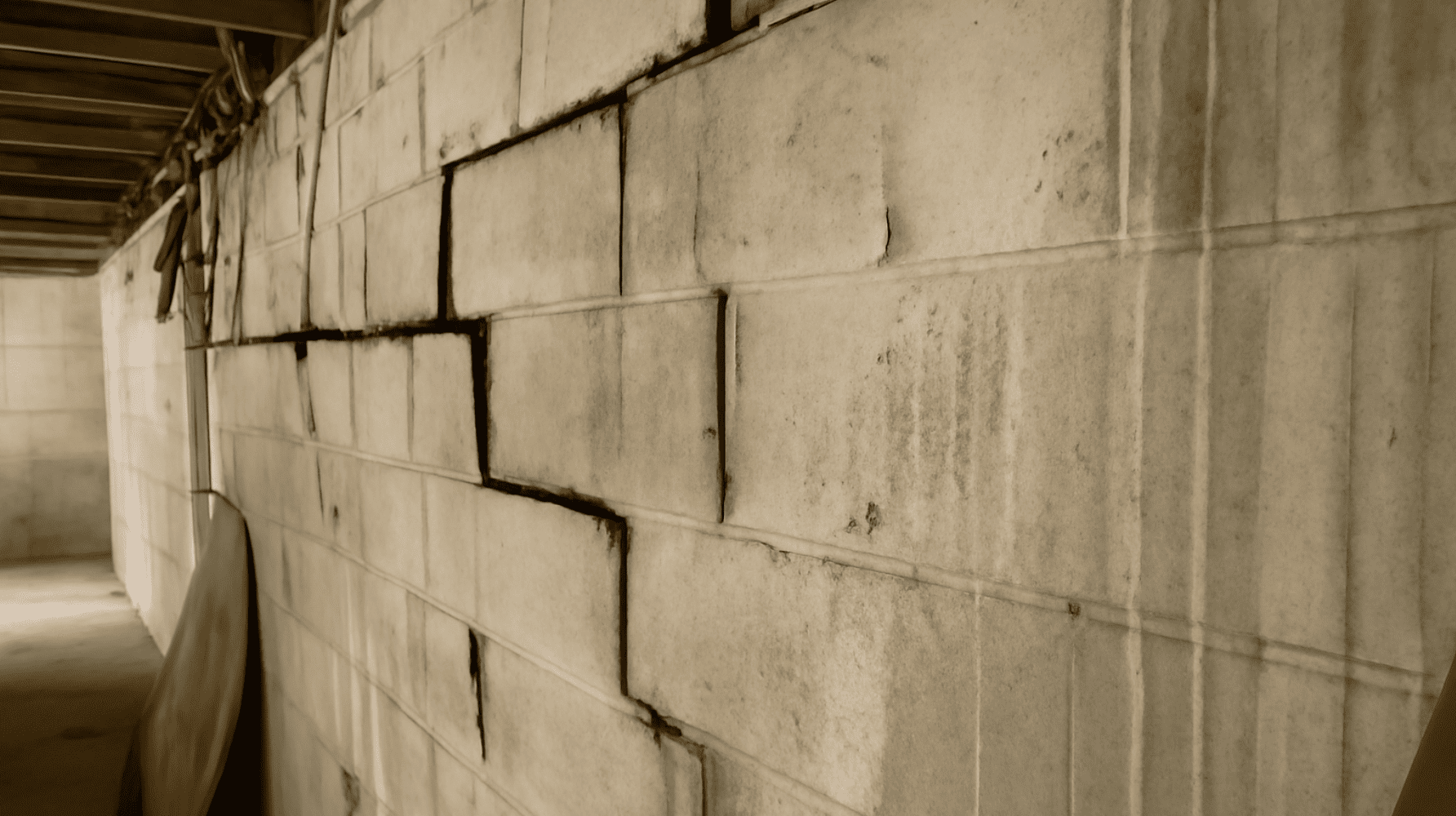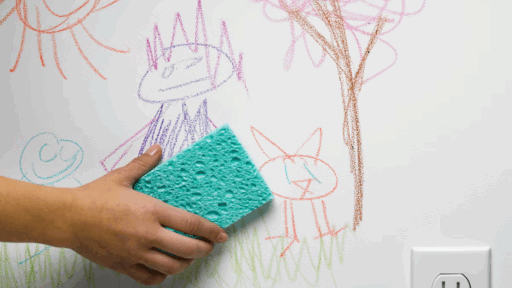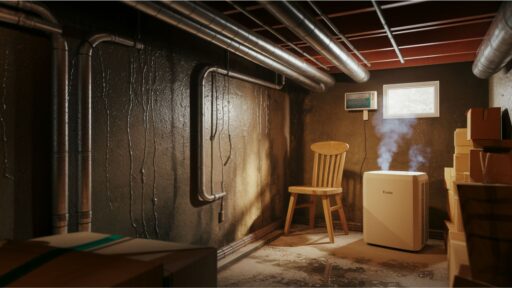Have you noticed walls in your home that aren’t quite straight anymore?
Bowing walls are a serious structural issue that many homeowners face, yet few know how to address them properly.
These walls begin to curve inward, creating not just an unsightly appearance but a genuine threat to your home’s stability and value.
If you’ve noticed cracks in your foundation or want to protect your investment, understanding bowing walls is essential.
Understanding the causes of wall bowing and effective repair methods can save you thousands in emergency costs.
With the right knowledge, you can tackle bowing walls confidently and preserve your home’s structural integrity for years to come.
What Are Bowing Walls?
Bowing walls are walls that curve, lean, or bulge inward instead of standing straight.
This problem occurs most often in basement or foundation walls.
Imagine a wall that should be flat but looks like it’s being pushed in from the outside, creating a curve like an archer’s bow.
Signs of bowing walls include horizontal cracks along mortar joints in block walls and visible inward curving when viewed from the side.
You might also notice stair-step cracks zigzagging through blocks or bricks.
Nearby doors may become misaligned, causing them to stick or be difficult to close.
To check for bowing walls, place a level tool against the wall surface.
A gap between the level and the wall suggests bowing.
Measuring crack widths and monitoring their growth over time can also help identify this serious foundation problem.
Common Causes of Bowing Walls
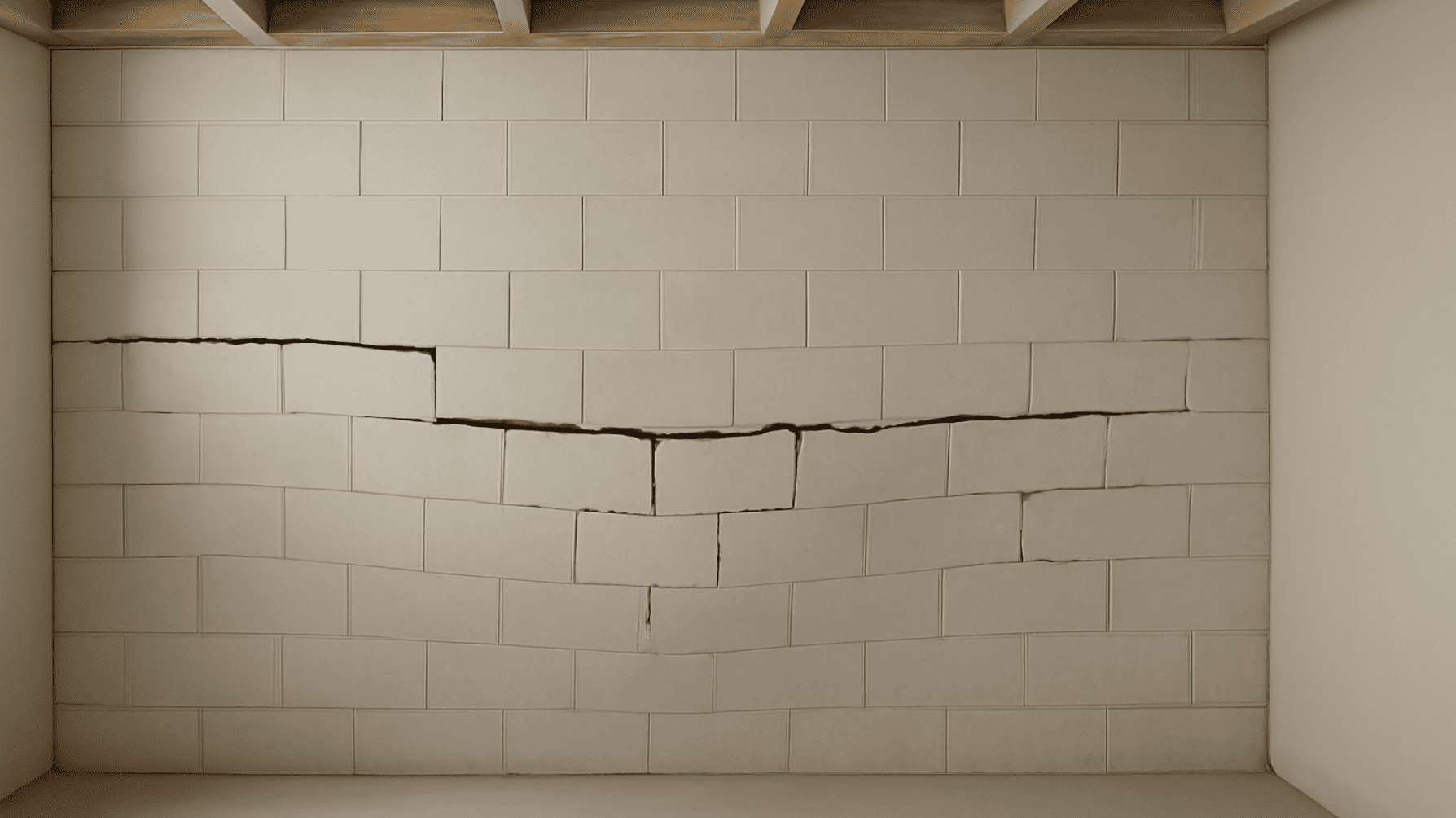
When walls begin to bow, several factors are typically at play.
Understanding these causes can help you address the root problem, not just the symptoms.
Learn the primary causes of bowing walls and their impact on your home’s structural integrity.
1. Soil Pressure and Hydrostatic Pressure
The soil around your foundation can exert a surprising amount of pressure against your walls.
This happens especially with clay soils that expand when wet. During rainy seasons, water builds up in the soil.
This creates hydrostatic pressure, essentially the same as water pressure.
The pressure pushes against your foundation walls.
This constant pressure can eventually cause even strong walls to crack.
They begin to bow inward when the pressure isn’t spread evenly along the wall.
2. Poor Drainage and Water Saturation
When water doesn’t drain properly around your home, it soaks into the soil.
This wet soil becomes heavy.
It puts extra pressure on your walls.
Several things can cause drainage problems.
These include clogged gutters and downspouts that empty too close to your foundation.
Yards that slope toward your home instead of away also cause issues.
The longer your foundation sits in wet soil, the more likely your walls are to bow.
3. Tree Roots and Vegetation
Large trees planted too close to your home can cause wall bowing in two ways.
Their roots may grow against your foundation.
They apply direct pressure as they expand.
During dry periods, tree roots pull moisture from the soil near your foundation.
This causes soil shrinkage and settlement.
When it rains again, the soil expands unevenly.
This creates pressure that can cause walls to bow over time.
4. Subpar Construction or Foundation Design
Walls may bow because they weren’t built strong enough in the first place.
Some foundations lack proper reinforcement. Sometimes blocks or bricks were laid without enough mortar.
Walls that are too thin for the pressure they face are vulnerable to bowing.
Building codes change over time.
Older homes might not have foundations designed to handle today’s understanding of soil pressure and water management.
How to Identify Bowing Walls in Your Home

Spotting bowing walls early can save you from costly repairs down the road.
Look for these warning signs around your home, especially in your basement or foundation walls.
These signals often appear before major structural damage occurs.
- Look for horizontal cracks running along basement walls, the most common sign of bowing.
- Check for stair-step cracks creating zigzag patterns through mortar joints in brick or block walls.
- Stand at the wall’s end and look along its surface for any inward curve or bulge.
- Test doors and windows; if they’ve become hard to open or close, the frames may have shifted.
- Place a level against suspicious walls; a gap between the level and the wall indicates bowing.
Don’t ignore these warning signs.
The sooner you identify bowing walls, the easier and less expensive they are to fix.
If you spot any of these symptoms, consider calling a foundation specialist for a professional evaluation.
Why Bowing Walls Are a Serious Concern
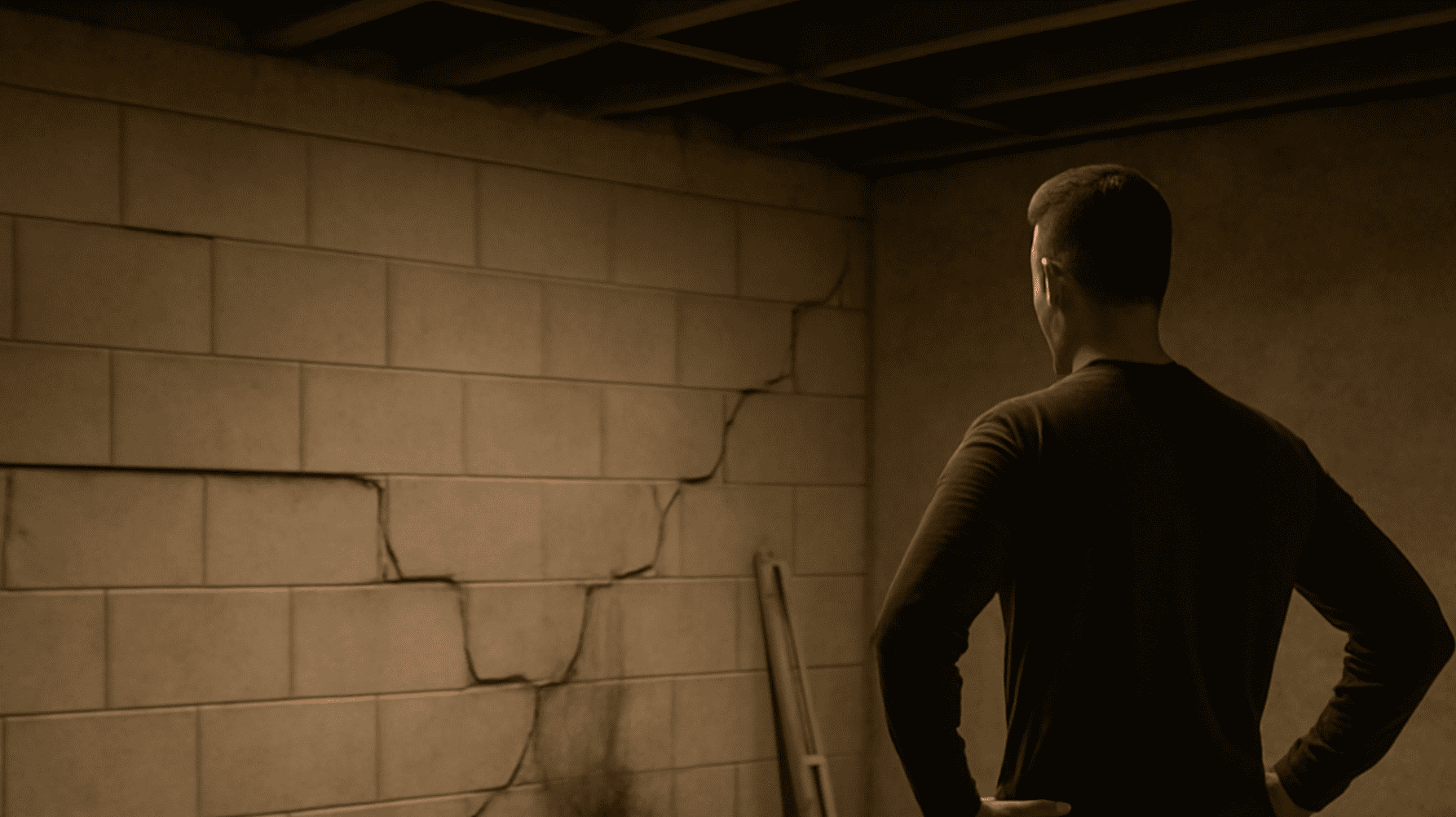
Bowing walls are not just an eyesore, they signal serious problems that need quick attention.
When walls bow, your home’s structural integrity is at risk.
The foundation of your house weakens, causing issues like cracks in upper floors and ceilings.
As walls bow, cracks form that let water seep into your basement or crawl space.
This moisture creates the perfect environment for mold and mildew, which can trigger health issues like allergies.
Home buyers and inspectors view foundation problems as major red flags.
Bowing walls can slash your home’s value by thousands of dollars.
Most concerning of all, ignoring bowing walls can lead to complete foundation failure.
Walls may collapse entirely.
This creates a dangerous situation for your family.
It also results in an extremely expensive emergency repair.
Bowing Wall Repair Methods

When it comes to fixing bowing walls, several effective solutions exist.
The right method for your home depends on the severity of the bowing, your budget, and other factors, such as access to the outside of your wall.
Here are the most common repair options, along with the associated costs and timelines.
1. Wall Anchors
Wall anchors connect your bowing wall to stable soil far from your foundation.
A metal plate on the inside wall connects to a rod that extends to an anchor buried in your yard.
The system is tightened over time to straighten the wall gradually.
Wall anchors work well for moderate bowing.
This method requires access to the soil outside your foundation.
2. Carbon Fiber Straps
Carbon fiber straps are strong strips that stick to your wall with epoxy.
They prevent further bowing but don’t straighten existing bowing.
These straps work best for walls with minimal bowing (less than 2 inches).
They’re less visible than other options.
Installation is quick, usually just one day, and doesn’t require digging outside.
3. Steel I-Beams
Steel I-beams are strong supports installed vertically against your bowing wall.
They bolt to your floor and ceiling joists to provide reinforcement.
I-beams can support severely bowed walls and provide immediate stability.
While effective, they take up some floor space and are clearly visible in your basement.
Installation typically takes 1-2 days.
4. Excavation and Foundation Rebuilding
For severe cases, the soil around your foundation must be removed and the wall rebuilt.
This involves digging around your home, removing the damaged wall, and building a new, stronger wall.
The process takes 1-2 weeks and requires heavy equipment to be present in your yard.
This method is usually only used when other methods won’t work.
5. Cost Comparison and Timeline Expectations
Before investing in repairs, it’s helpful to understand what each solution costs and how long it takes.
Different methods fit different budgets and situations. Here’s a breakdown of what you can expect:
| REPAIR METHOD | COST RANGE | TIMELINE | BEST FOR | WARRANTY |
|---|---|---|---|---|
| Carbon Fiber Straps | $3,000-$6,000 | 1 day | Minor bowing ( | 10-25 years |
| Wall Anchors | $5,000-$12,000 | 1-2 days | Moderate bowing | 10-25 years |
| Steel I-Beams | $5,000-$12,000 | 1-3 days | Severe bowing | 10-25 years |
| Foundation Rebuilding | $15,000-$40,000 | 1-2 weeks | Extreme cases/failure | 10-25 years |
NOTE: Actual costs and timelines may vary depending on location, contractor, and specific project details.
Prevention Tips for Homeowners

You can take simple steps to protect your home from developing bowing walls.
These inexpensive measures can save you thousands in future repairs.
- Slope the ground away from your foundation, 1-inch drop per foot for 6 feet around your home.
- Direct downspouts to release water at least 5-10 feet from your foundation.
- Inspect basement walls quarterly for new cracks, especially after heavy rain.
- Keep trees at least 15-20 feet from your foundation to prevent root pressure.
- Clean gutters twice yearly to prevent soil saturation around your foundation.
- Install a sump pump in areas with high rainfall or a high water table.
Remember that prevention costs much less than repair.
These simple steps can now save you from expensive foundation work later.
Wrapping It Up
Bowing walls are a problem you can solve with the right information.
Now you know what makes walls bow, how to spot the warning signs early, and what fixes work best.
Taking care of bowing walls promptly is always more cost-effective than waiting for an emergency.
Simple prevention steps can stop most bowing problems before they start.
Remember that catching wall issues early is your best defense.
If you notice any signs of bowing walls, contact a professional immediately.
By staying alert and taking quick action, you’ll keep your home strong, safe, and valuable for many years to come.
Don’t let bowing walls threaten your biggest investment; address them promptly and with confidence.
Learned how to spot and fix bowing walls?
Explore more blogs in our home maintenance section to keep your home safe!

